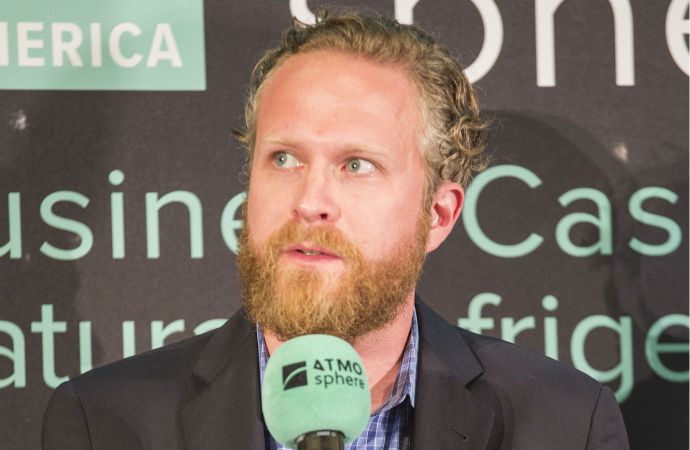The U.S. retailer will apply under the EPA’s SNAP program to increase the maximum charge of the hydrocarbon refrigerant permitted in chillers to 45 lbs. (20.41 kg).

Tristam Coffin, director of sustainability and facilities for Whole Foods’ Northern California division, at ATMOsphere America 2017, San Diego, Calif.
Whole Foods Market will request approval from the U.S. Environmental Protection Agency’s SNAP (Significant New Alternatives Policy) program to use propane in chillers for charges up to 45 lbs. (20.41 kg).
Whole Foods had received previous permission from the EPA to test market its propane/CO2 cascade system - developed with systems manufacturer and designer Carnot – in a store in Santa Clara, Calif., last year.
The company, based in Austin, Texas, will submit the application to the EPA in two months, Tristam Coffin, director of sustainability and facilities for Whole Foods’ Northern California division, said at ATMOsphere America 2017, San Diego, Calif., earlier this month.
“So the idea is the SNAP application gets approved and that its application can be used for anyone in the industry going forward that is interested in designing a similar type [propane chiller] system,” Coffin said.
So the idea is the SNAP application gets approved and that its application can be used for anyone in the industry going forward that is interested in designing a similar type [propane chiller] system.”
– Tristam Coffin, Whole Foods
Whole Foods’ 49,000-square-foot Santa Clara store, which opened in August 2016, is the first in the U.S. to employ a propane/CO2 cascade refrigeration system.
The system, provided by Quebec-based Carnot Refrigeration, contains about 265 lbs. of propane, spread across seven chiller units on the roof, including three for low-temperature and four for medium-temperature applications.
“The current design is seven modular systems, each with a charge of less than 40 pounds per unit but the charge we put in to the SNAP application is 45 pounds,” he clarified.
Pressure to relax U.S. restrictions
Whole Foods is not the only company putting pressure on the U.S. EPA’s SNAP charge limits. Blupura, an Italian manufacturer of bottle coolers, and UK commercial refrigeration firm Carter Retail Equipment have both submitted an application to the EPA to increase the maximum charge (amount) of hydrocarbon refrigerant permitted.
In January 2016, Blupura became the first company to receive authorization from the EPA to sell R290-based water coolers in the United States.
The EPA now allows water coolers to use 80g (0.18 lbs.) of R290 after this submission by Blupura.
Carter wants the maximum charge of hydrocarbon refrigerant permitted in food/commercial retail refrigeration standalone equipment to increase to 1kg (2.20 lbs.) from 150g (0.33 lbs.).
Carter’s SNAP application was submitted in February 2016.
Further pressure on charge limits internationally
The International Electrotechnical Commission (IEC) working group on household and similar electrical appliances has begun to prepare a draft to change the charge limit on hydrocarbons. The new limit is expected to change from 150g (0.33 lbs.) to 500g (1.10 lbs.); this could shift the market towards bigger, more efficient hydrocarbon cabinets once it is adopted by the full IEC.
Standards from the IEC, a worldwide body that proposes rules governing how to use electrical, electronic and related technologies, influence the development of the market by providing manufacturers and customers with guidelines as to what is safe to use and buy.
The 26 working group members – comprising 13 countries, including Germany, New Zealand, Japan, and the U.S. – are expected to increase the limit to 500g by the end of 2017 or the beginning of 2018.
Related stories




